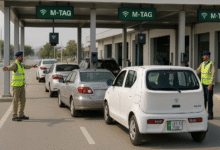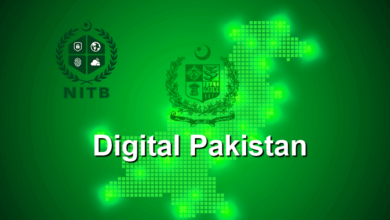How Pakistan is Advancing in Renewable Energy Technologies
This article explores how Pakistan is advancing in renewable energy technologies and why it’s a game-changer for the country’s future.

Pakistan, like many nations facing the urgent challenge of climate change, is shifting its focus towards sustainable development. With a growing population, increasing energy demands, and the adverse effects of fossil fuels, the country is actively embracing renewable energy technologies. From solar farms in Punjab to wind corridors in Sindh, Pakistan is making notable strides in green energy adoption. This article explores how Pakistan is advancing in renewable energy technologies and why it’s a game-changer for the country’s future.
The Growing Need for Renewable Energy in Pakistan
Pakistan has long been dependent on imported fossil fuels to meet its energy requirements. This dependency has resulted in fluctuating energy prices, economic strain, and significant carbon emissions. With over 220 million people and a rapidly urbanizing landscape, the demand for clean, reliable, and affordable energy is greater than ever.
The national grid has often been plagued by blackouts and load shedding, especially in rural and remote areas. These energy crises have not only hampered economic growth but have also highlighted the urgency of investing in clean energy solutions. Fortunately, renewable energy technologies offer a sustainable way out of this cycle.
Government Policies Supporting Renewable Energy
One of the major drivers of renewable energy development in Pakistan is governmental support. The Alternative and Renewable Energy Policy (ARE) 2019 laid the foundation for the country’s green energy revolution. The policy aims to increase the share of renewable energy in the national energy mix to 30% by 2030, with an additional 30% from hydropower sources.
To achieve this, the government has introduced various incentives such as:
-
Tax exemptions for renewable energy equipment
-
Net metering policies to allow households to sell excess solar energy
-
Simplified approval processes for private investors
These policy reforms have made Pakistan an attractive destination for foreign and local investments in solar, wind, hydro, and biomass energy projects.
Solar Energy Boom Across the Country
Solar energy is perhaps the most accessible and scalable renewable energy source in Pakistan. With over 300 sunny days a year, the country has immense potential for solar power generation.
Key Solar Initiatives
-
Quaid-e-Azam Solar Park (QASP) in Bahawalpur is one of the largest solar parks in Asia, generating 100 MW in its first phase and aiming for 1,000 MW.
-
Net metering systems are being widely adopted by businesses and households in cities like Lahore, Islamabad, and Karachi, reducing reliance on grid electricity.
-
Solar tube wells are transforming agriculture in Balochistan and Punjab by providing sustainable water pumping solutions.
These initiatives reflect the significant progress Pakistan has made in adopting solar energy technologies.
Harnessing Wind Energy in Sindh
Sindh’s Gharo-Jhimpir wind corridor is another promising frontier for renewable energy technologies. Stretching over 60 km and with wind speeds averaging 7-8 m/s, the corridor can generate more than 50,000 MW of electricity.
Major Wind Projects
-
The Jhimpir Wind Power Plant and several other wind farms are currently contributing over 1,200 MW to the national grid.
-
Foreign companies, particularly from China and Turkey, have partnered with local firms under the China-Pakistan Economic Corridor (CPEC) to develop large-scale wind energy projects.
These developments show how wind energy is emerging as a key pillar of Pakistan’s renewable energy portfolio.
Hydropower: A Long-Standing Resource
Hydropower has historically been a major contributor to Pakistan’s energy supply. With rivers like the Indus and a mountainous northern region, Pakistan has an estimated potential of 60,000 MW of hydroelectric capacity.
Major Hydropower Projects
-
Tarbela Dam and Mangla Dam have long been the backbone of Pakistan’s hydropower generation.
-
The Diamer-Bhasha Dam and Dasu Hydropower Project are under construction, with the potential to add over 7,000 MW of clean electricity.
Hydropower is not only a renewable source but also helps in water management and agricultural irrigation, making it a multi-benefit asset in Pakistan’s energy strategy.
Emerging Bioenergy and Waste-to-Energy Solutions
While solar and wind get much of the spotlight, biomass and waste-to-energy solutions are quietly gaining traction.
Pakistan, being an agricultural country, produces a large amount of organic waste, which can be converted into bioenergy. Sugarcane bagasse, rice husks, and animal waste are being used to generate power in rural areas.
Notable Developments
-
The Lahore Waste-to-Energy Plant, a project in collaboration with Chinese firms, aims to convert 2,000 tons of municipal waste daily into electricity.
-
Pilot biogas plants are being tested in Punjab and KPK to provide clean cooking fuel to off-grid communities.
These initiatives not only address energy shortages but also reduce urban and rural pollution, aligning with the country’s sustainability goals.
Technological Advancements in Renewable Energy
Pakistan is also witnessing growth in local renewable energy innovations. Engineering universities and startups are playing a critical role in developing low-cost and efficient energy solutions.
Key Innovations
-
Smart solar inverters and energy management systems are being developed domestically to improve efficiency.
-
Mobile apps for energy monitoring and billing integration are making renewable systems more user-friendly.
-
Research in solar panel recycling and wind turbine optimization is underway to ensure sustainability throughout the energy lifecycle.
These advancements indicate that Pakistan is not just adopting but also adapting renewable energy technologies to suit its specific needs.
Public Awareness and Private Sector Participation
One of the biggest catalysts for Pakistan’s green energy progress is the rising public awareness about the importance of sustainability. Environmental NGOs, media, and schools are actively promoting climate literacy and the use of clean energy.
Moreover, the private sector is stepping up:
-
Major corporations are setting up rooftop solar panels to reduce energy costs.
-
Real estate developers are offering solar-ready homes in new housing schemes.
-
Banks are providing green financing options, including interest-free loans for solar installations.
These shifts show how renewable energy technologies are becoming mainstream in both urban and rural landscapes.
Challenges in the Path of Green Energy
Despite these achievements, there are still hurdles that need to be addressed:
-
Grid integration issues with intermittent energy sources like solar and wind.
-
Lack of energy storage infrastructure such as batteries or pumped hydro.
-
Policy inconsistency and bureaucratic delays in project approvals.
-
Skilled workforce shortage for the installation and maintenance of renewable energy systems.
However, with continued investment, training programs, and public-private partnerships, these challenges can be overcome.
The Road Ahead: Vision 2030 and Beyond
Pakistan’s vision for 2030 and beyond is to establish a sustainable, affordable, and independent energy ecosystem. This involves
-
Increasing the share of renewables to at least 60% of the total energy mix.
-
Establishing local manufacturing of solar panels, turbines, and batteries.
-
Expanding off-grid renewable systems for remote communities.
-
Developing regional cooperation with countries like China and Iran for energy sharing.
If these goals are achieved, Pakistan could become a regional leader in renewable energy technologies, setting an example for other developing nations.
Conclusion: A Green Future is Within Reach
Pakistan is making commendable progress in embracing renewable energy technologies. With solar, wind, hydro, and bioenergy projects already in motion, the country is moving toward a cleaner, more sustainable future. The collective efforts of the government, private sector, and civil society are driving this transformation.
As Pakistan continues to innovate, invest, and educate, the dream of a green, energy-secure nation is not just a possibility—it’s becoming a reality.










